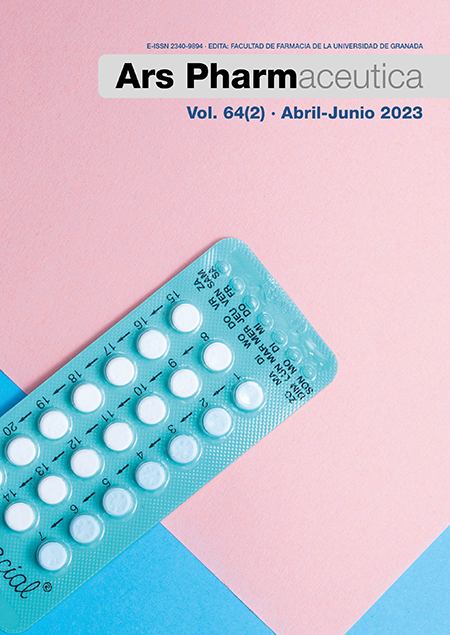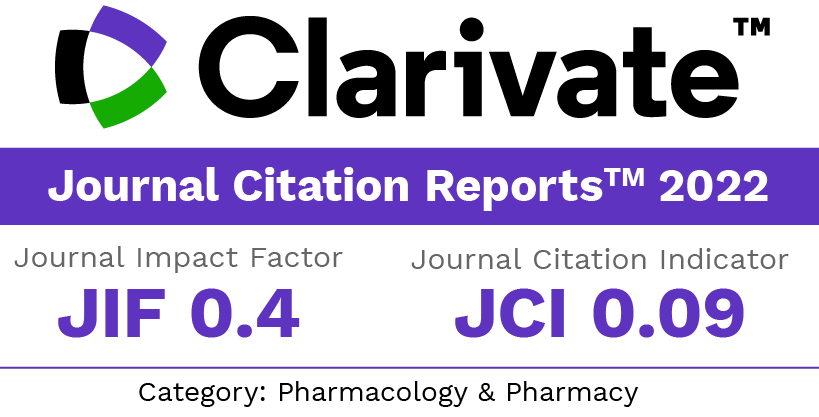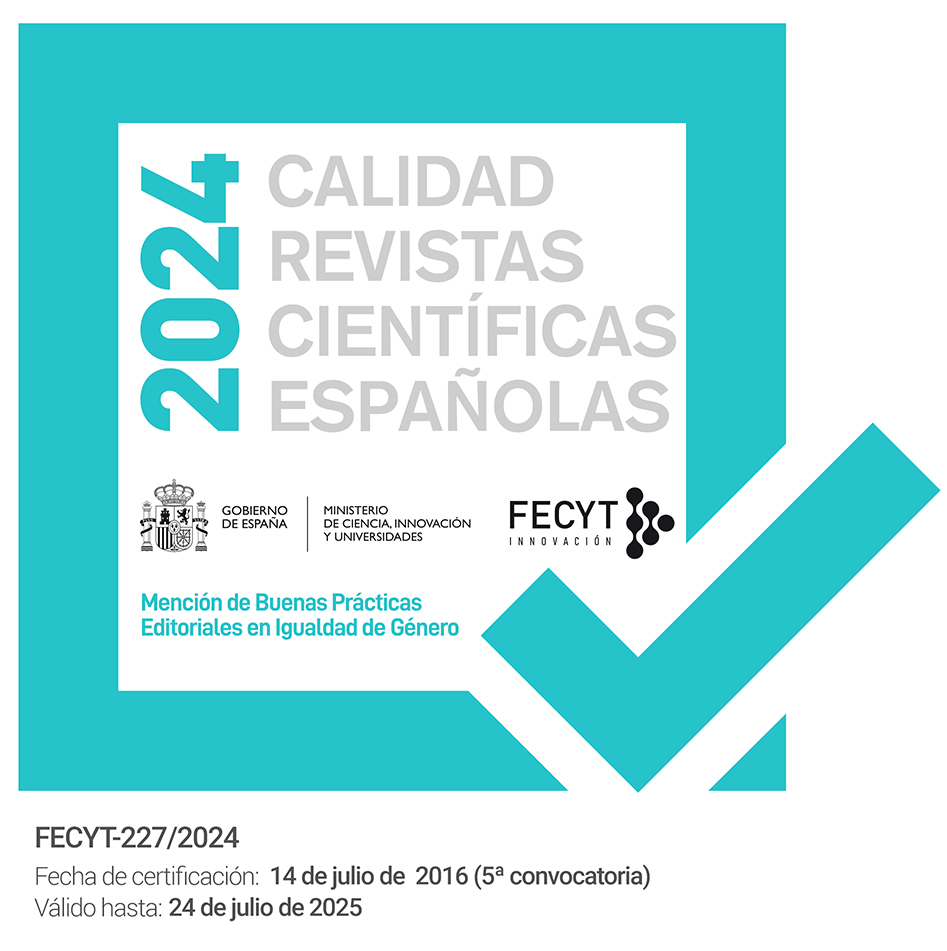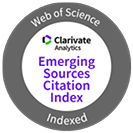Drug related problems in inpatients of Santiago de Cuba
DOI:
https://doi.org/10.30827/ars.v64i2.26902Keywords:
hospitalized patients; drug-related problems; pharmacotherapeutic follow-upAbstract
Introduction: Drug-related problems are a major health concern because of their high impact on inpatient morbidity.
Method: Descriptive and cross-sectional observational, study in the clinical services of five health institutions of Santiago de Cuba, during the first quarter of 2020. The profiles of 329 patients who received pharmacotherapeutic follow-up were reviewed. The sample was characterized according to biosocials, clinical and pharmacotherapeutic variables, the identification of medication-related problems was performed using the criteria of Cipolle, Stramd and Morley, also determining the drugs involved in medication-related problems. The data were processed through absolute and relative frequencies represented by means of tables and figures.
Results: Patients over or equal to 60 years of age predominated, representing 38.6 %; 61.4 % of the patients were female. Most of the patients had up to two diseases (76.3 %); complicated respiratory infections (35.6 %) were the most frequent reason for admission. Between four and six medications were consumed by 36.5 %, with antibacterials for systemic use being the most prescribed. A total of 598 drug-related problems were identified for a ratio of 1.8 DRP/patient, of which 42.8 % corresponded to safety problems, 31.1 % to indication, followed by 24.9 % to effectiveness and finally 1.2 % to adherence.
Conclusions: Antimicrobials were the most implicated in the occurrence of medication-related problems. Pharmaceutical care offers services that ensure the appropriate use of medications.
Downloads
References
Cipolle RJ, Strand LM, Morley PC. Pharmaceutical Care Practice: The Patient Centered Approach to Medication Management. 3rd Edition. New York: McGraw Hill Professional; 2012.
Meier F, Maas R, Anja S, et al. Adverse drug events in patients admitted to an emergency department: an analysis of direct costs. Pharmacoepidemiol Drug Saf. 2015; 24(2): 176-186. Doi:10.1002/pds.3663
Abdullah AH, Maisoon G, Hisham A, Zoe A. A systematic review of hospitalization resulting from medicine-related problems in adult patients. Br J Clin Pharmacol. 2014; 78(2): 202-21. Doi:10.1111/bcp.12293
Calvo RA, David M, Zapata MI, Rodríguez CM, Valencia NY. Problemas relacionados con medicamentos que causan ingresos por urgencias en un hospital de alta complejidad. Farm Hosp. 2018; 42(6): 228-233. Doi: 10.7399/fh.10996
Nivya K, Sri V, Kiran S, Ragoo N, Jayaprakash B, Sekhar MS. Systemic review on drug related hospital admissions–A pubmed based search. Saudi Pharm J. 2015; 23(1):1-8. Doi:10.1016/j.jsps.2013.05.006
Hailu BY, Berhe DF, Gudina EK, Gidey K, Getachew M. Drug related problems in admitted geriatric patients: the impact of clinical pharmacist interventions. BMC Geriatr. 2020;20(1):13. Doi:10.1186/s12877-020-1413-7
Viprey M, Jeannin R, Piriou V, et al. Prevalence of drug-related problems associated with direct oral anticoagulants in hospitalized patients: a multicenter, cross-sectional study. J Clin Pharm Ther. 2016; 42(1): 58-63. Doi: 10.1111/jcpt.12473
García D, Lores D, Dupotey N M, Espino D L. Atención Farmacéutica en adultos mayores hipertensos. Una experiencia en la atención primaria de salud en Cuba. Ars Pharm. 2018; 59(2): 91-98. Doi:10.30827/ars.v59i2.7307
Sagita VA, Bahtiar A, Andrajati R. Evaluation of a clinical pharmacist intervention on clinical and drug-related problems among coronary heart disease inpatients. Sultan Qaboos Univ Med J. 2018; 18(1): 81-87. Doi:10.18295/squmj.2018.18.01.013
Farias do Nascimento AR, Duarte RW, Tabares ME, Xavier T, Randll R. Drug-related problems in cardiac neonates under intensive care. Rev Paul Pediatr. 2020; 38: e2018134. Doi:10.1590/1984-0462/2020/38/2018134.
Romero VK, Murillo AFM, Salvent TA, Vega FV. Evaluación del uso de antibióticos en mujeres embarazadas con infección urinaria en el Centro de Salud ¨Juan Eulogio Pazymiño¨ del Distrito de Salud 23D02. Rev Chil Obstet Ginecol. 2019; 84(3): 169-178. Doi:10.4067/S0717-75262019000300169
Guerro M, Olmo MA, Catalá MA. Prevalencia de problemas relacionados con la medicación en pacientes crónicos pluripatológicos complejos y oportunidades de mejora. Farm Hosp. 2018; 42(5): 197-199. Doi:0.7399/fh.10899
Palchik V, Bianchi M, Colautti M, et al. Atención farmacéutica de adultos mayores. Aplicación de los criterios STOPP-START.Journal of Healthcare Quality Research. 2020; 35(1): 35-41 Doi:10.1016/j.jhqr.2019.08.003
García FD, Lores DD, Dupotey VN, Espino LD. Problemas relacionados con medicamentos en adultos mayores hipertensos. Pharm Care Esp. 2021; 23(3): 219-35.
Orellana DF, Jorge UM, Katherine LV, Paul FM. Prevalencia de infecciones respiratorias agudas y su asociación con desnutrición en pacientes menores de 5 años atendidos en el Centro de Salud de Cuchil, 2016. Rev Med HJCA. 2017; 9(2): 170-5.
Coronel C, Huerta Y, Ramos O. Factores de riesgo de la infección respiratoria aguda en menores de cinco años. Rev Arch Med Camagüey, 2018; 22(2): 194-203.
Rojas D. Morbilidad y mortalidad del adulto mayor en un servicio de medicina de un hospital general del Perú. Rev Per de Epid. 2010; 14(2): 99-107.
Morales M, Zúñiga CA, Clape O, García E, Quintana T, Dupotey NM, Rodríguez M, Serpa L. Consumo de antibacterianos en tres hospitales de Santiago de Cuba en el período 2019-2020. J Pharm Pharmacogn Res. 2022; 10(6): 986-994. Doi:10.56499/jppres22.1453_10.6.986
Hernández M, Martín Y, Carianza D, Vales M, Ramos Y. Consumo y resistencia de los antibacteriano en un hospital de 2do nivel. Medicentro Electrónica. 2016; 20(4): 268-277.
González A, Santana R, Vázquez L, Gómez I, Hernández J, Casanueva R. Resistencia antimicrobiana según mapa microbiológico y consumo de antimicrobianos. Rev Cub Med Int Emerg. 2021; 20(1): e728. http://www.revmie.sld.cu/index.php/mie/article/view/728
Pérez N, Sierra D, Díaz, Romero Y, Trujillo M. Consumo de antibióticos en dos servicios hospitalarios. Revista Electrónica Medimay. 2020; 27(4): 473-480.
Ferrández O, Casañ B, Grau S, et al. Análisis de los problemas relacionados con los medicamentos en un hospital de tercer nivel de Barcelona. Gac Sanit. 2019; 33 (4): 361-368. Doi:10.1016/j.gaceta.2018.01.002
Hsu W, Shen L, Lee C. Drug-related problems vary with medication category and treatment duration in Taiwanese heart failure outpatients receiving case management. J Formos Med Assoc. 2016; 115: 335-342. Doi:10.1016/j.jfma.2015.11.014
Savitha RS, Ramesh M, Shetty MS, Kiran KK. Drug-related problems and pharmacist interventions in inpatients with chronic kidney disease. Int. J. Res. Pharm. Sci. 2020; 11(1): 960-966. Doi:10.26452/ijrps.v11i1.1921
Carreño M, Raraz L. Problemas Relacionados con la Medicación en pacientes hospitalizados con Diabetes Mellitus tipo II en la Clínica Internacional sede San Borja en los meses enero-junio del año 2017 [Tesis Licenciatura]. Lima: Universidad Norbert Wiener, Escuela Académico Profesional de Farmacia y Bioquímica; 2017.
Flores JM, Ochoa MG, López LL, Trejo EA, Morelos AG. Interacciones medicamentosas relacionadas con la administración de antibióticos betalactámicos. Revista Asoc Dent Mex. 2016; 73(5): 227-234.
Guzmán C, Rodríguez V, Calderón A. Análisis de usos y resistencia a antibióticos en una UCI de Montería, Colombia. Rev Méd Risaralda. 2018; 24 (2): 7575-80.
Romero K, Sanmartin DM, Almarales MA. Atención farmacéutica en pacientes apendicectomizados en el Hospital General “Teófilo Dávila”. Rev Cub Med Mil. 2019; 48(2).
Ariza DV. Factores asociados a reacciones adversas a medicamentos en adultos mayores de 60 años de edad, hipertensos y diabéticos con polimedicación, adscritos a un plan de beneficio especial en salud en el departamento del atlántico, durante el año 2016 [Tesis Maestría en Epidemiología]. Universidad del Norte. División de Ciencias de la Salud. Colombia; 2017.
Tinitana J, Torres I, Tacuri J, Ajila J, Zari D, Zhuzhingo C. Polifarmacia en pacientes adultos mayores pluripatológicos que acuden al primer nivel de atención en salud. Facsalud Unemi 2018; 2(3): 34-41.
Downloads
Published
How to Cite
Issue
Section
License
Copyright (c) 2023 Maraelys Morales Gonzalez, Rosario Megret-Despaigne, Enieyis Tur-Naranjo, Niurka María Dupotey-Varela, Evelyn Ivette Rojas-Vázquez, Marelbis Quintero-Muñoz

This work is licensed under a Creative Commons Attribution-NonCommercial-ShareAlike 4.0 International License.
The articles, which are published in this journal, are subject to the following terms in relation to the rights of patrimonial or exploitation:
- The authors will keep their copyright and guarantee to the journal the right of first publication of their work, which will be distributed with a Creative Commons BY-NC-SA 4.0 license that allows third parties to reuse the work whenever its author, quote the original source and do not make commercial use of it.
b. The authors may adopt other non-exclusive licensing agreements for the distribution of the published version of the work (e.g., deposit it in an institutional telematic file or publish it in a monographic volume) provided that the original source of its publication is indicated.
c. Authors are allowed and advised to disseminate their work through the Internet (e.g. in institutional repositories or on their website) before and during the submission process, which can produce interesting exchanges and increase citations of the published work. (See The effect of open access).























